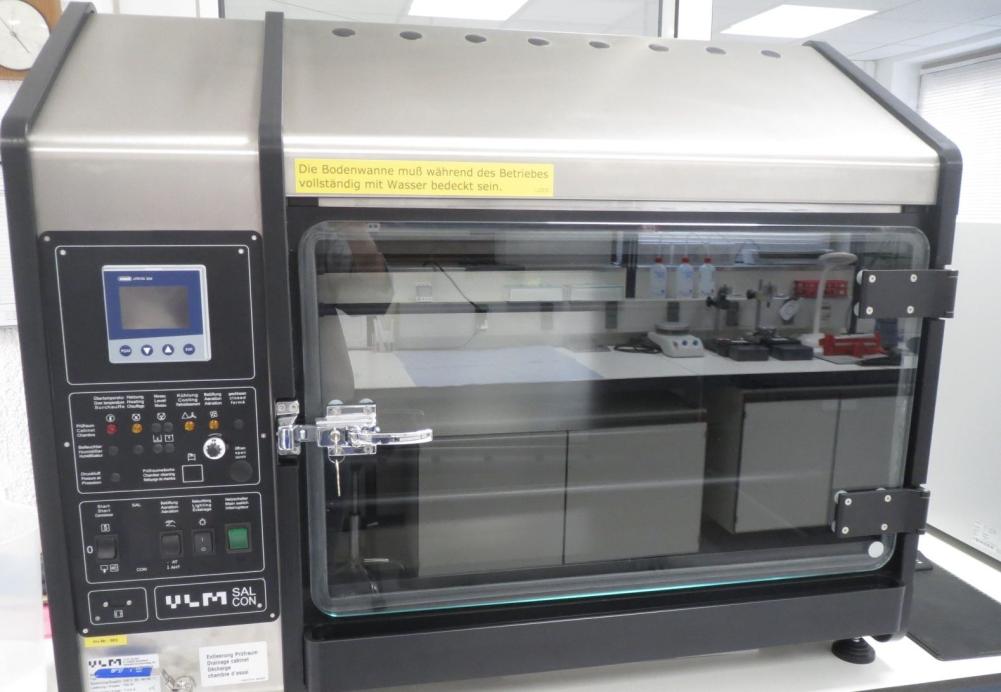ENVIRONMENTAL SIMULATIONS
Salt spray test
The salt spray tests are particularly useful for detecting weak spots such as pores and other damage, in certain metallic coatings and organic coatings, as well as anodic oxide layers and conversion layers.
The neutral salt spray test applies to:
Metals and their alloys
Metal coatings (anodic or cathodic effective)
Conversion layers
anodic oxide layers
organic coatings on metallic materials
The acetic acid salt spray test is particularly useful for testing decorative coatings of copper + nickel + chromium or nickel + chromium. It is also suitable for testing anodic layers on aluminum.
The copper-accelerated acetic acid salt spray test is useful for testing decorative coatings of copper + nickel + chromium or nickel + chromium. It is also suitable for testing anodic coatings on aluminum.
All salt spray techniques are suitable for comparing whether the quality of a metallic material, with or without corrosion protection, is maintained.
Standard: DIN EN ISO 9227
NSS-AASS-CASS
Neutral salt spray test (NSS-Test): 5%NaCl (Sodium chloride solution) - pH 6,5-7,2; distilled or deionized water with a conductivity not exceeding 20 S/cm
Acetic acid salt spray test (AASS-Test): Add glacial acetic acid to the saline solution (5%NaCl) - pH: 3,1-3,3
Copper accelerated acetic acid salt spray test (CASS-Test): Copper(II)-chlorid-Dihydrat (CuCl2 2 H2O) salve in the saline solution (5%NaCl), is reached leaving a concentration of (0,26 0,02) g/l [corresponding (0,205 0,015) g CuCl2/l].
Cycling test
VW P1210
VDA 621-415
Cycling test is a common word for the corrosion tests. Salt spray test, condensate test, Kesternichtest are also listed under cycling test.
Each factory or ISO standard describes the exact operating conditions (temperature, spraying time, etc.)
Standards
DIN EN 60068-2
DIN EN 248
BMW PR 303.4
BMW PR 308.1
GMW 14872
Daimler PA PP PWT 3001
Ford CEPT 00.00-L-467
Porsche PPV 4017
Volvo VCS 1027
VW PV 1200
VW PV 2005
Condensed water test
Determination of Resistance to Moisture - Method for Loading Samples in Condensation Climates:
Condensed water glands are referred to as follows:
CH: Condensation atmosphere with constant humidity)
AHT: Condensation climate with alternating humidity and air temperature)
AT: Condensation climate with alternating air temperature
Condensation test climates allow the condensation of air humidity on sample body surfaces whose temperatures are smaller than those of the saturated test chamber air due to radiation onto the chamber walls or through sample body cooling. The air temperature of the test chamber during the condensation process described in this part of ISO 6270 is 40 C.
Standard: DIN EN ISO 6270-2










